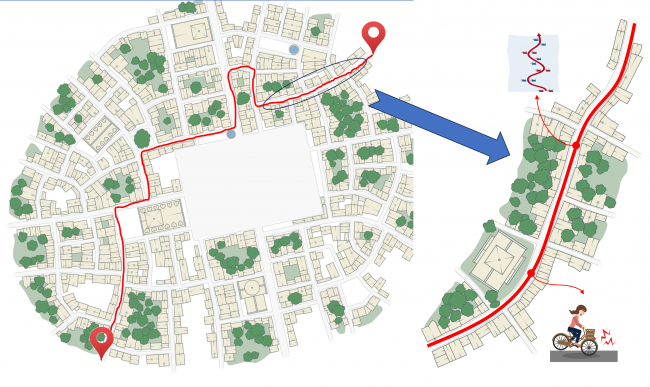SAFETY PERFORMANCES OF INSTRUMENTED MICRO-MOBILITY MODES BY LEVERAGING MICROSCOPIC DRIVING BEHAVIOR DATA
Purpose and goal
Shared micro-mobility services offer a sustainable alternative to cars for short trips in cities. However, in several areas, there are concerns with the safety performance of the users of such services. This results in negative feedback from the public, especially for e-scooters, and the service providers also may be required to pay high insurance premiums to compensate for such safety and security challenges. It is, therefore, imperative from the perspective of all stakeholders to develop new methods and/or digital solutions to improve the safety performance of the users of such modes. One way to monitor the safety performance is by analyzing the accident statistics, however, there are clear challenges associated with the comprehensiveness and extent of accident database. Alternative measures, e.g., monitoring near misses using different surrogate safety metrics, have gained popularity in the recent years but there are still open challenges with extraction of such metrics and use them to derive the overall safety performances, especially on route-level.
The main aim of this pre-study is, therefore, to develop a comprehensive metric to evaluate the safety performance of the user of a micro-mobility mode on a route level.
Planned approach and activities
- Literature review to identify different surrogate safety metrics applicable to micro-mobility modes.
- Propose new metrics for safety evaluation, assuming the literature review identifies weaknesses and/or gaps in the current body of knowledge.
- Combine existing and proposed metrics to develop a single comprehensive metric for route-level safety evaluation of micro-mobility modes, taking into account different tradeoffs related to various possible instrumentation setups (balancing the added value of more complex sensors over their higher cost).
- Apply the metric on sample datasets to check to what extent it is possible to extract the metric (or part of it) from each dataset.
- Investigate if a similar safety performance evaluation can be performed using bicycle simulator in VTI.
- Suggest suitable infrastructural setup(s) (e.g., cost-efficient instrumentation of micro-mobility modes) for comprehensive safety performance evaluation, possibly again with a quantitative presentation of suitable tradeoff alternatives.
The pre-study will be helpful in conceiving a larger project with two main objectives:
- Develop business models to provide incentives to safe micro-mobility users and/or penalties to unsafe micro-mobility users.
- Develop C-ITS services for instrumented micro-mobility modes to influence safe micro-mobility riding behavior.
Expected results
- Measurable list of surrogate safety assessment metrics for (partially) instrumented micro-mobility modes.
- Development of a comprehensive metric for route-level safety performance evaluation of (partially) instrumented micro-mobility modes.
- Demonstration of safety performance using sample data
Contribution to SAFER
The pre-study is designed to contribute to the following SAFER research targets under RUB category:
- Study road user behaviour in their door to door travels.
- Monitor driver and passenger position, state and behaviour.
